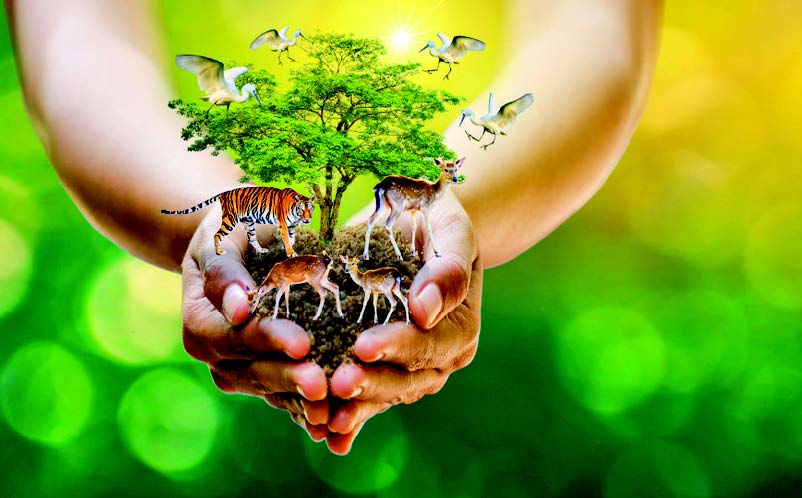Earlier this year, a ten-year challenge stormed the internet and rose to popularity, compelling netizens to post a “then and now” selfie from 2009 and 2019. Encouraged by the photos, some reminisced the experiences they’ve had over the years, while some expressed pride at how far they’ve come after a decade.
Yet behind the happy façade, there was a more serious conversation that began to become unmasked: the climate change dilemma and the rapid decline of wildlife in just ten years.
More than 10 animal species have been declared extinct within the last decade, while other species have been listed as critically endangered based on recent reports by the International Union for Conservation of Nature (IUCN).
The dangers of wildlife endangerment
The powerful and majestic beings that were the Eastern cougar (Puma concolor couguar) and Formosan clouded leopard (Neofelis nebulosa brachyuran) were both declared extinct this year, after 10 years of being listed as critically endangered.
The Western black rhino (Diceros bicornis longipes) was listed as critically endangered in 2009, too, and within two years, their whole population disappeared because of continuous illegal poaching. Most illegal hunters target their horns, which are commonly used as Chinese medicine.

In the oceans, creatures are also suffering. Whale sharks (Rhincodon typus) were noted to be vulnerable to endangerment back in 2009, but leaped fast to being critically endangered in 2019. Even the Irrawaddy dolphins (Orcaella brevirostris) suffered a sudden decline in numbers and have been noted endangered by the IUCN in 2017.
Human activities resulting in loss of habitat, overexploitation, and pollution are the main causes of animal life endangerment.
World Wildlife Fund’s (WWF) living planet report in 2018 showed that there was a 60% decline in animal population in just over 40 years. If the wildlife population drastically declines continuously, it will cause not just a stir in social media, but also global chaos.
Animals – all species and kinds – play a vital part in the ecosystem. Author Brianna Smith once reported that, “Everything would fall apart if something as major as all animal kind went extinct.”
Saving lives in the wild
Numerous wildlife organizations and conservation groups continue to help preserve the lives of animals around the world.
WWF is one of the groups that aims to find solutions by using the best science available to save the lives of animals. One of their most notable works is their participation in the recovery of southern Africa’s black rhino population and the black bucks in the Himalayas.

Asian Elephant Conservation is a project that helps elephants escape harsh maltreatment due to lucrative but abusive trades. Through this project, volunteers help protect the gentle giants’ population and reintroduce them in protected forests and sanctuaries. There is also a conservation project for puma and jaguars classified endangered in South America after being threatened by illegal poaching and deforestation.
Educating the public is one effective way to protect wildlife. So many animals are deliberately killed due to public misinformation, for example, as seen in great white sharks. They have fallen victim to a drastic population decline because most people believe what they see in movies, where sharks are often depicted as monsters. Millions of sharks are also killed each year for their fins, jaws, teeth and organs. Currently, there’s a conservation group in Gansbaai, Africa that helps research, track, and organize educational campaigns to stop the stigma surrounding these misunderstood animals.
Law of the land (and oceans)
Besides wildlife conservation groups, governments have also passed laws that help in wildlife conservation.
According to the Animal Legal Defense Fund, New York City and Illinois were the first states to ban the use of elephants in entertainment, which became an eye-opener for other states and countries.
IUCN recently listed pandas as endangered with less than 1,600 of them left living in the wild. But thanks to the Chinese government’s efforts to conserve the lovable creatures, the panda population has doubled over the years.
Romania, home to 60% of the brown bear population in Europe, also created laws to protect these animals. Abused brown bears are currently rehabilitated so they could return to their natural homes.
Call to action
Wildlife is still on a decline and might continue to be in the coming years. But, if everyone would stand together as one and understand the implications of this issue, there is still hope.
If we truly care about the planet we call home, we should also care about the animals we share it with.
This appeared in Animal Scene magazine’s September 2019 issue.
Related stories:
– Taking selfies with wildlife harms animals, experts warn
– California to build largest wildlife crossing in the world
– Wildlife managers to use game cameras to count wolves





